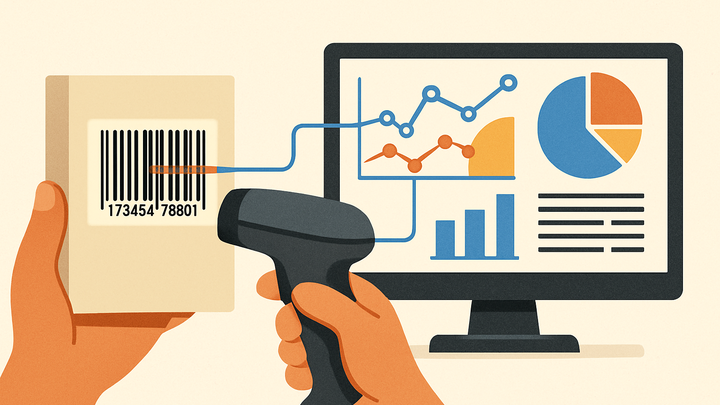Published on 2025-06-26T04:47:43Z
What is UPC? (Universal Product Code)
The Universal Product Code (UPC) is a 12-digit barcode symbology widely used in retail to uniquely identify products at the point of sale. It was developed in the early 1970s and governed by GS1 US, ensuring each code remains unique worldwide. In analytics, UPC serves as a cornerstone for linking sales data, inventory levels, and marketing performance to specific items. By embedding UPCs into web analytics events or POS systems, businesses can accurately track consumer interactions, attribute revenues, and analyze product-level performance. Both privacy-first tools like PlainSignal and platforms like Google Analytics 4 support passing UPC as a parameter, enabling consistent, cross-channel reporting and deep e-commerce insights.
Upc
UPC is a 12-digit barcode used to uniquely identify retail products in analytics.
Why UPC Matters in Analytics
UPC enables precise product-level tracking across all sales channels, eliminating ambiguity and ensuring accurate aggregation of metrics like revenue, inventory turnover, and customer interactions.
-
Unique identification
UPC provides a standardized, globally unique identifier that prevents confusion when consolidating data from POS systems, e-commerce platforms, and marketing tools.
-
Seamless system integration
Recognized by GS1 standards, UPCs integrate natively into retail ERP, inventory management, and analytics solutions, reducing manual mapping errors.
UPC vs Other Product Identifiers
Understanding how UPC relates to and differs from similar identifiers helps clarify when and why to use each code type.
-
Upc vs sku
SKUs (Stock Keeping Units) are internal codes unique to a retailer, while UPCs are globally standardized barcodes assigned by GS1 for universal recognition.
-
Upc vs gtin
GTIN (Global Trade Item Number) is an umbrella term encompassing various barcode formats—UPC is specifically the 12-digit subset known as GTIN-12.
How to Track UPC with Analytics Tools
Learn how to pass UPC data into tools like PlainSignal and Google Analytics 4 to unlock product-level insights.
-
PlainSignal implementation
With PlainSignal’s cookie-free analytics, attach the product UPC as a custom property when firing e-commerce events. Example tracking code:
<link rel="preconnect" href="//eu.plainsignal.com/" crossorigin /> <script defer data-do="yourwebsitedomain.com" data-id="0GQV1xmtzQQ" data-api="//eu.plainsignal.com" src="//cdn.plainsignal.com/plainsignal-min.js"></script> <script> PlainSignal.track('Purchase', { item_name: 'Organic Coffee Beans', item_category: 'Beverages', item_upc: '012345678905', price: 19.99 }); </script> -
GA4 implementation
In Google Analytics 4, include the UPC in the items array of e-commerce events. Example:
gtag('event', 'purchase', { transaction_id: 'T12345', items: [{ item_name: 'Organic Coffee Beans', item_id: 'P12345', item_upc: '012345678905', price: 19.99, quantity: 1 }] });
Use Cases of UPC in Analytics
Practical scenarios where tracking UPC enhances decision-making and operational efficiency.
-
Inventory management
Analyze stock levels and turnover by UPC to optimize reorder points and minimize stockouts.
-
Sales attribution
Match online and in-store transactions by UPC to accurately attribute sales to marketing campaigns.
-
Product performance analysis
Compare views, add-to-cart rates, and purchases at the UPC level to identify top- and under-performing items.
Best Practices for UPC Tracking
Guidelines to ensure clean, consistent UPC data collection and reporting.
-
Validate upc format
Ensure all UPCs conform to the 12-digit GS1 standard to avoid misreporting or dropouts in analytics.
-
Consistent event parameters
Pass the UPC parameter across all relevant events (e.g., view_item, add_to_cart, purchase) to maintain analytical integrity.
-
Configure custom dimensions
In GA4, create a custom dimension for ‘item_upc’ to enable filtering and reporting in the Analytics UI.
